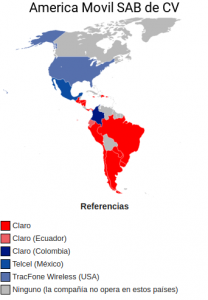The concept of transfer pricing appeared in Mexico around 1997, after the signing of the North American Free Trade Agreement (1992) and the opening of trade in products and services with multinational companies. Given this, the need arose to regulate the commercial exchanges made by taxpayers with related parties through agreements.
The term transfer price is the price fixed between two related companies to transfer goods and services, preventing them from manipulating the prices at their convenience at the time of the exchange. This happens in companies that have subsidiaries in different countries allowing to move products or services to adjust their tax burden according to the laws of those countries.
The Organization for Economic Cooperation and Development (OECD) generates guidelines on transfer pricing for multinational companies and tax administrations, which aim to monitor tax evasion and corroborate that fiscal profits and losses remain in the country where they are generated.

The mechanism for verifying compliance with this concept is done through the Market Value Principle ( arm’s length principle ), that is, checking that the prices are maintained and correspond to the prices fixed, that the documentation endorses that the operations were carried out by means of this principle and finally, that the fulfillment of the corresponding tax burden is verified.
The knowledge and study on transfer prices have been implemented in different countries of the world due to the fiscal implications that it represents. In this sense, rule 2.12.8. of the Third Resolution of modifications to the fiscal miscellany resolution for 2016, mentions that the taxpayers that make queries on this subject must do it in terms of the file of procedure 102 / CFF “Consultas en materia de precios de transferencia”, contained in the Annex 1-A.
When the tax authorities differ from the method or methods proposed by the taxpayers to determine the price or amount of the consideration in transactions with persons resident in the country or abroad related to them, they may perform a functional analysis, that is, the The authority will seek to confirm the business reason in the operations carried out. 
To obtain information, quantitative and qualitative additional to the one provided that is relevant to the determination of the methodology object of the consultation, at the tax domicile of the interested party a minute will be drawn up, as well as in its establishments, branches, premises, places where store merchandise, or in any other place or establishment, platform, vessel, or area in which reconnaissance or surface exploration work is carried out as well as exploration or extraction of hydrocarbons, where the events and manifestations provided will be reported to give congruence to the information and thus evaluate the circumstances and technical elements involved in the transfer price.
As time goes by, globalization brings us closer to this type of concepts and legislation, since global business development is increasingly present in the country and in the national economic society, even though this concept is only the tip of the iceberg We consider it worthwhile to present the existence of legislation against multinational businesses.
Starbucks Crew by Artotems Co. CC-BY 2.0

